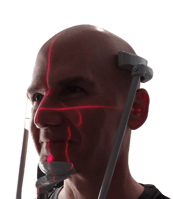Are toilet plumes and hand dryers a major source of COVID-19 risk? Not likely! We bring together a panel of experts to help sort it out and arm you with valuable evidence-based knowledge. [this webinar aired on October 8, 2020]
Please note:
Literature and resources below have been collected and posted for ease of access, and do not necessarily represent the most recent or most complete findings regarding SARS-CoV-2 aerosols, transmission, and bathroom safety.
COVID-19 Aerosol FAQ
Not published in a peer-reviewed journal. Living document maintained and updated by members of the Aerosol Research Community.
Can you catch COVID-19 from your neighbor's toilet?
Science. September 4, 2020.
Can you get COVID-19 in the bathroom?
Chemical & Engineering News. October 4, 2020.
Enteric involvement of coronaviruses: is faecal–oral transmission of SARS-CoV-2 possible?
The Lancet Gastroenterology & Hepatology. February 19, 2020.
Lifting the lid on toilet plume aerosol: A literature review with suggestions for future research
American Journal of Infection Control. October 5, 2012
The potential spread of infection caused by aerosol contamination of surfaces after flushing a domestic toilet
Journal of Applied Microbiology. June 16, 2005.
Aerosol Generation by Modern Flush Toilets
Aerosol Science and Technology. June 18, 2013.
COVID-19 and the workplace: Research questions for the aerosol science community
Aerosol Science and Technology. July 28, 2020.
Particle sizes of infectious aerosols: implications for infection control.
The Lancet Respiratory Medicine. July 24, 2020.
Evaluation of the potential for virus dispersal during hand drying: a comparison of three methods.
Journal of Applied Microbiology. November 30, 2015.
Dispersal of microbes to hospital surfaces following two hand drying methods: paper towels or a jet air dryer.
University of Leeds (shared via Google Drive). 2019.
Reducing transmission of SARS-CoV-2
Science. June 26, 2020.
Aerodynamic analysis of SARS-CoV-2 in two Wuhan hospitals
Nature. April 27, 2020.
Asymptomatic Transmission of SARS-CoV-2 on Evacuation Flight
Emerging Infecious Diseases (early release). November 2020.
Air, Surface Environmental, and Personal Protective Equipment Contamination by SARS-CoV-2 From a Symptomatic Patient
Journal of the American Medical Association. March 4, 2020.
SARS-CoV-2 in wastewater: potential health risk, but also data source
The Lancet Gastroenterology & Hepatology. April 1, 2020.
How sewage could reveal true scale of coronavirus outbreak
Nature. April 3, 2020.
SARS-CoV-2: The Growing Case for Potential Transmission in a Building via Wastewater Plumbing Systems
Annals of Internal Medicine. September 1, 2020.

Pierre Herckes, Ph.D.
Professor
Arizona State University
pierre.herckes@asu.edu
Pierre is a professor in the School of Molecular Sciences at Arizona State University. He teaches and conducts research in environmental chemistry, especially air pollution. For over 20 years he has studied aerosols and clouds droplets, their chemistry, sources and impacts on human health, both indoors and outdoors.

Jonathan Klane
Director of Risk Management and Safety Education
SciShield
jonathan.klane@bioraft.com
After many years in consulting, teaching, and directing safety and risk for two engineering colleges, Jonathan is now part of the SciShield team in a new role – Director of Risk management and Safety Education. This new innovative position encompasses risk management, safety culture, EHS compliance, loss control, and safety education for the entire community.

Matt Segal
MC
SciShield
matt.segal@bioraft.com
Matt found his way to SciShield after working at Boston Children's Hospital performing translational rare blood disease research. As the safety guy in his lab, he saw firsthand how challenging it was to manage safety in a laboratory environment and wanted to find a way to help. He now spends his time hosting webinars, arguing with his 3D printer, and cooking food in plastic bags at low temperatures.
Copyright @2024